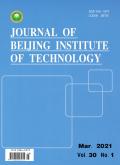协方差下四元数线性正则变换的不确定性原理
Q4 Engineering
Journal of Beijing Institute of Technology (English Edition)
Pub Date : 2021-09-30
DOI:10.15918/J.JBIT1004-0579.2021.034
引用次数: 1
摘要
不确定性原理(UP)提供了关于信号及其在时频平面上的傅立叶变换的信息,在数学、物理和信号处理领域尤其强大。在四元数值信号的极坐标形式下,双边四元数线性正则变换(QLCT)的UP在协方差方面得到了加强。得到了导出结果具有相等关系的条件。具有协方差的新UP可以被视为与QLCT相关的更严格形式的UP。它指出,四元数值信号在空间域和QLCT域中的扩展的乘积有一个较大的下界。本文章由计算机程序翻译,如有差异,请以英文原文为准。
Uncertainty Principle for the Quaternion Linear Canonical Transform in Terms of Covariance
An uncertainty principle (UP), which offers information about a signal and its Fourier transform in the time-frequency plane, is particularly powerful in mathematics, physics and signal processing community. Under the polar coordinate form of quaternion-valued signals, the UP of the two-sided quaternion linear canonical transform (QLCT) is strengthened in terms of covariance. The condition giving rise to the equal relation of the derived result is obtained as well. The novel UP with covariance can be regarded as one in a tighter form related to the QLCT. It states that the product of spreads of a quaternion-valued signal in the spatial domain and the QLCT domain is bounded by a larger lower bound.
求助全文
通过发布文献求助,成功后即可免费获取论文全文。
去求助
来源期刊

Journal of Beijing Institute of Technology (English Edition)
Engineering-Engineering (all)
CiteScore
1.10
自引率
0.00%
发文量
2437
 求助内容:
求助内容: 应助结果提醒方式:
应助结果提醒方式:


